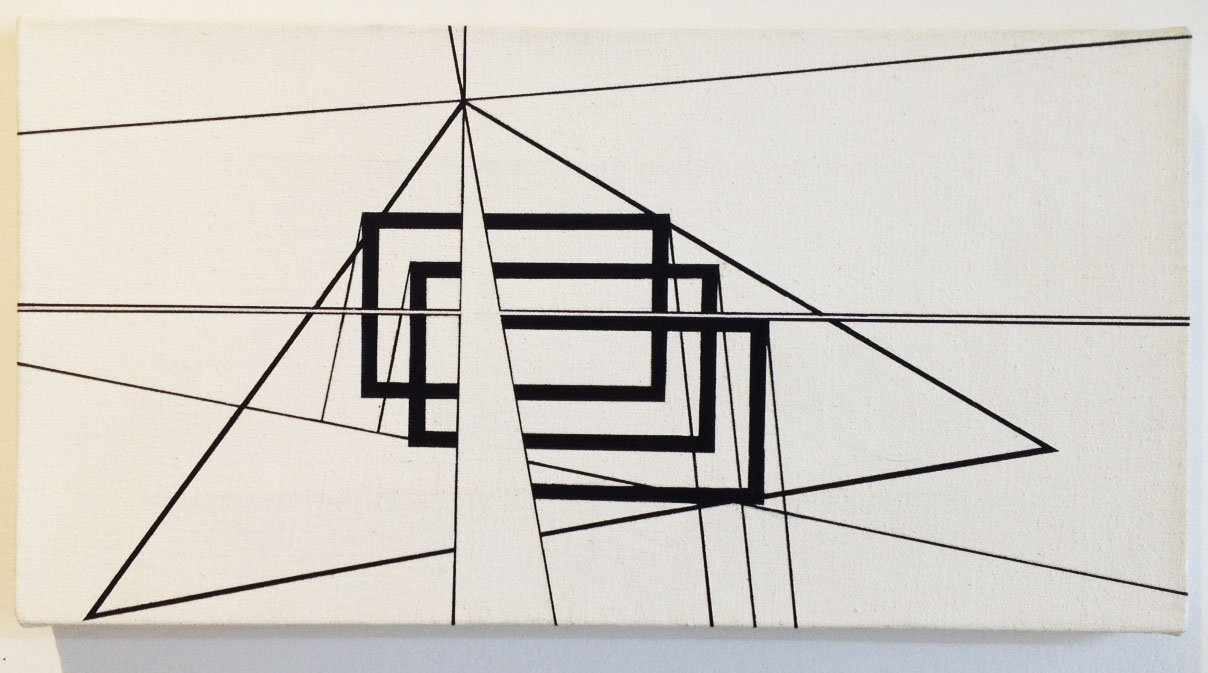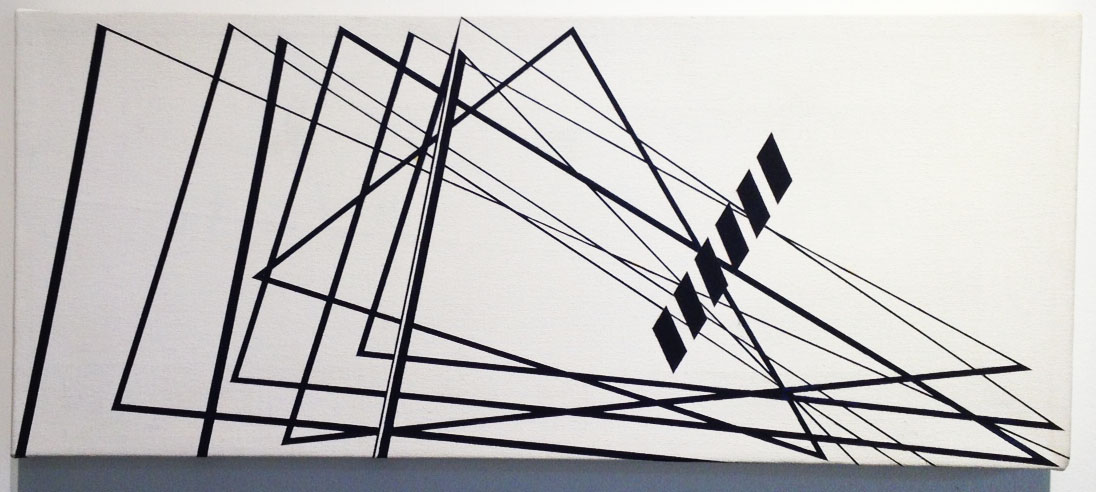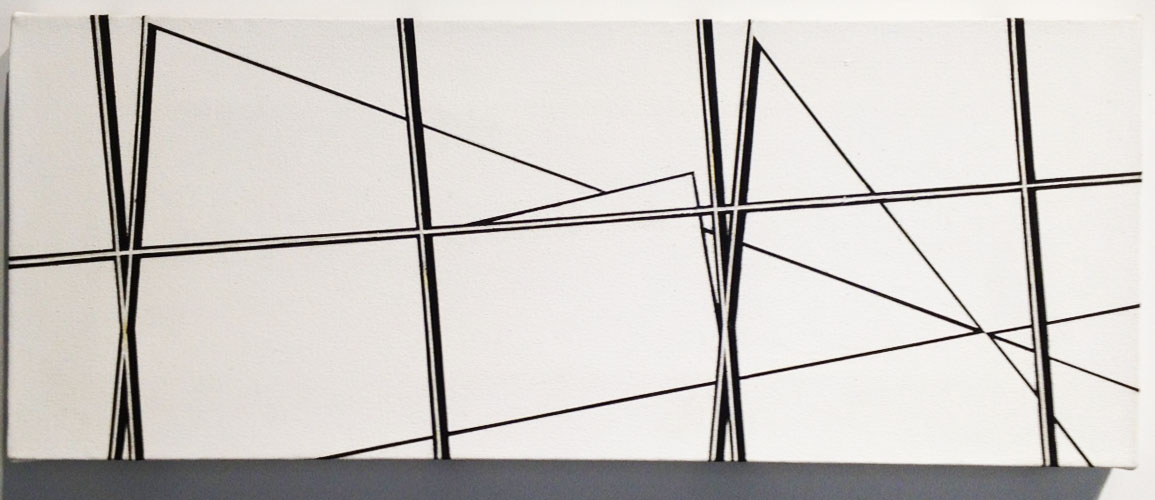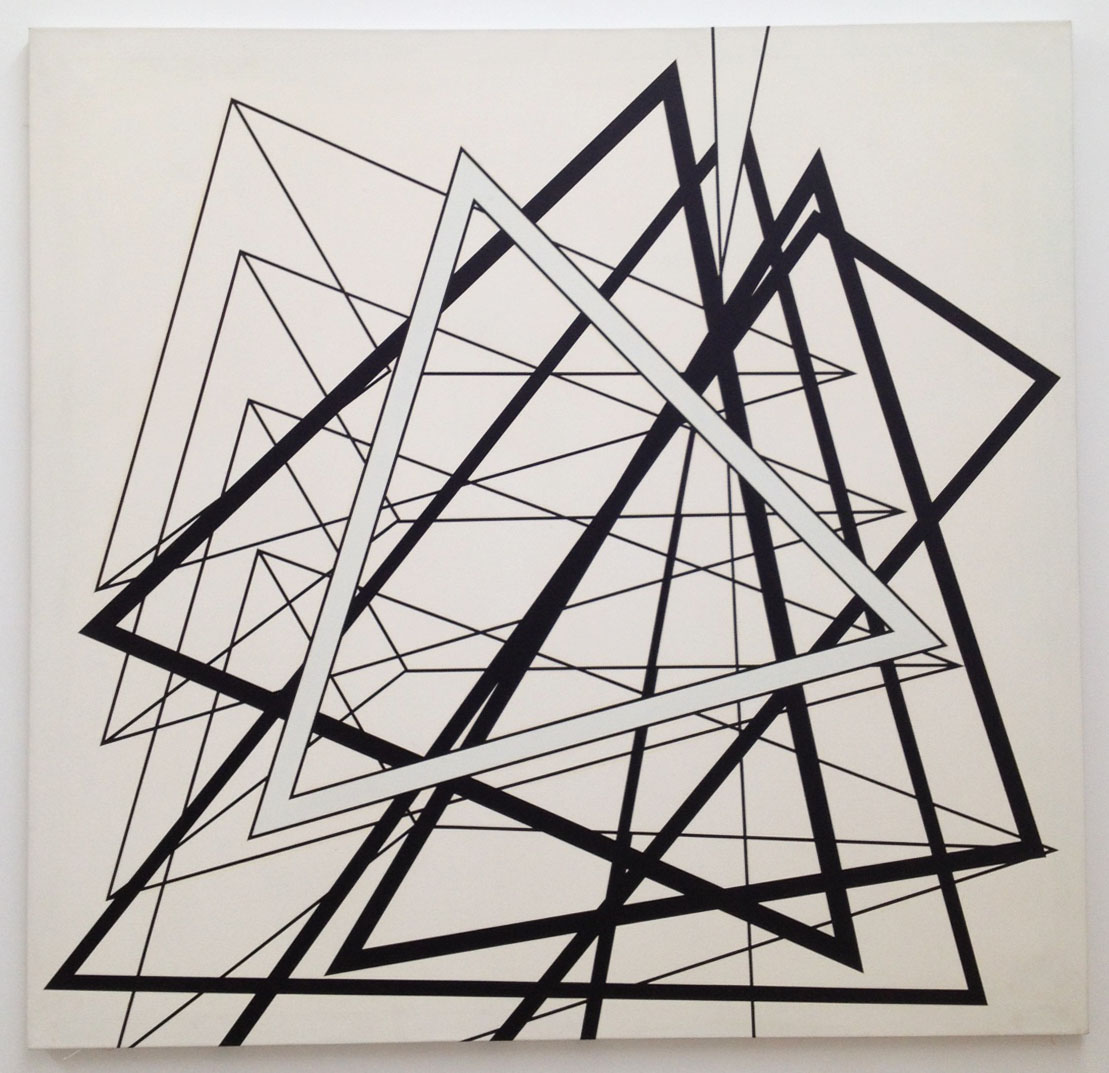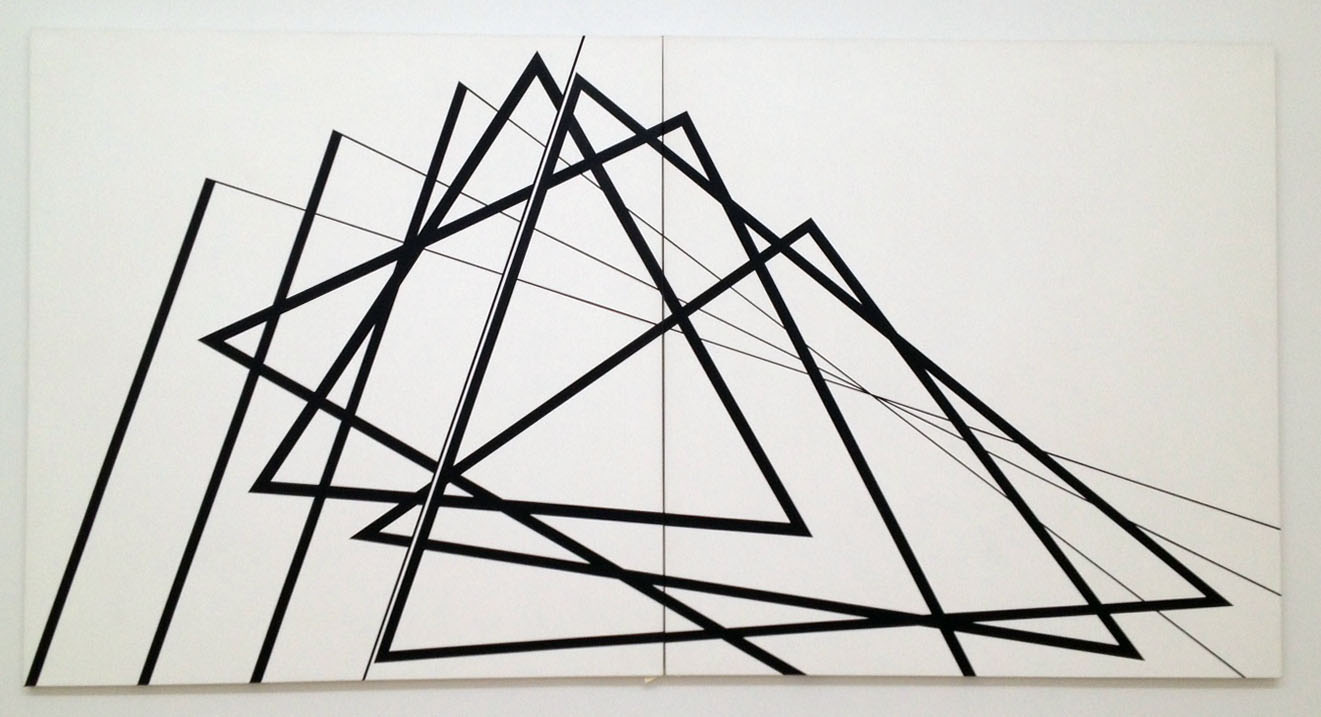Leonard Contino
Curated by Mark di Suvero
February 2 - March 9, 2013
Opening reception: February 2, 6-8pm
A self-taught artist who always sketched and drew as a child, Leonard Contino first used paint to pin-stripe cars and hot rods in his Brooklyn neighborhood. In 1962, at the age of 19, he suffered a severe spinal cord injury in a diving accident, which left him a quadriplegic and confined to a wheelchair. While receiving treatment at the Rusk Institute, he met another patient, artist Mark di Suvero.
Encouraged by Mark di Suvero, Contino, using a brace for his hand, started to make drawings and eventually to paint. Contino's first show was at the seminal Soho gallery, Park Place. A hard-edged geometric abstract painter for over forty years, Contino's works include sculpture, wall reliefs, and collages. His paintings are in a number of museums and private collections including the Hirschhorn Museum and Sculpture Garden, the Dallas Museum of Art, and the Foundation of Contemporary Art, Geneva. Contino's work, which has been described as precisionist and visionary, represents a relentless exploration of pictorial space using dynamic geometric forms.
Internationally renowned sculptor Mark di Suvero was born in Shanghai, China, in 1933. He immigrated to the United States in 1941 and received a BA in Philosophy from the Unversity of California, Berkeley. di Suvero began showing his sculpture in the late 1950s and is one of the most important American artists to emerge from the Abstract Expressionist era. A pioneer in the use of steel, di Suvero is without peer in the exhibition of public sculpture worldwide. Mark di Suvero's architectural-scale sculptures—many with moving elements that invite viewer participation—have been exhibited in the United States, France, the Netherlands, Italy, Spain, Germany, Australia, Japan, and the United Kingdom. di Suvero is the first living artist to exhibit in Le Jardin de Tuileries and Les Esplanades des Invalides in Paris and at Millennium Park-Chicago. His work is in over 100 museums and public collections, including the J.P. Getty Museum, the Hirshhorn Museum and Sculpture Garden, the Los Angeles County Museum of Art, the Museum of Contemporary Art Los Angeles, the Museum of Modern Art, National Gallery of Art, the Whitney Museum of American Art, the Walker Art Center, and Storm King Art Center where he has had three major exhibitions.
Mark di Suvero is a lifelong activist for peace and social justice, and has demonstrated a generous commitment to helping artists. In 1962 he co-founded Park Place Gallery, the first artists' cooperative in New York City. In 1977, he established the Athena Foundation to help artists realize their ambitions. In 1986, he established Socrates Sculpture Park at the site of a landfill on the East River in Queens, New York. Through his leadership, a 4.5 acre parcel was transformed by a coalition of artists and community members into an open studio and exhibition space. To date, the park has hosted the work of over 900 artists.
di Suvero received the Lifetime Achievement Award in Contemporary Sculpture from the International Sculpture Center in 2000, the Heinz Award for Arts and Humanities in 2005 and the Smithsonian Archives of American Art in 2010. He also was a recipient of the National Medal of the Arts in 2010.
ARTIST'S STATEMENT
Leonard Contino is a hard-edged geometric abstract painter who has been making art for over 40 years. In addition to painting, Contino's works include sculpture, wall reliefs and collages. His paintings are in a number of museums and private collections including the Hirshhorn Museum and Sculpture Garden, the Dallas Museum of Art, and the Foundation of Contemporary Art, Geneva. Contino's work, which has been described as precisionist and "visionary"(1), represents a relentless exploration of pictorial space using dynamic geometric forms.
In his paintings, Contino's uses three motifs: biomorphic shapes, tessellated patterns of interlocking squares and rectangles, as well as transparent and solid color triangles, which Contino calls "floaters." In these paintings, Contino builds up thin layers of acrylic paint to create subtly shimmering surfaces. The paintings appear to glow and emanate light. At the center of the canvas, he places hard-edged densely colored solid triangular shapes. These geometric shapes and forms, encased in soft aureoles of light, appear to be weightless and suspended in space, creating a complex pictorial illusionism. However, for Contino, it's not so much to fool the eye as in trompe l'oeil or Op art but to engage the viewer by creating a painting that he says "is like a field of energy. "
Within this flexible geometry, the spatial ambiguities occur over time creating a continually shifting pictorial plane. For Contino, these paintings are "made up of simple elements that are constantly changing. " This constantly changing pictorial space is a hallmark of Contino's art, something that he has persistently pursued for over 40 years. And over that time, Contino has created a body of work that is lively, rigorous and represents a compelling artistic vision.
CURATOR'S STATEMENT
Leonard Contino is a brilliant dedicated brother-artist that I have known and worked with for fifty years. We have done figure drawing with John Chamberlain, studies from the nude, participated in the commune gallery Park Place, the radical initiating Soho gallery, and have lived the extreme life and death of New York artists.
His experimental works of the 1960s that ranged from sand-paintings to optical, dazzling zig-zagged pin-stripe paintings have a true artist's inspiration and dedication. The scope and consistency of his major work is breathtaking; the geometrical central core of his work demands the focused attention that all major life-changing art works give to us. Beyond the paintings, the collage-watercolors have an idiosyncratic exploration of sexually bizarre and quirky incandescence. His sculptural maquettes have a constructivist orientation are much closer to the studied geometrical paintings that are the core of his work.
His art is the reason of his life.
It is not surprising that his sculpture, rarely seen in the art gallery world, is so related to the geometrical art of Park Place (1960s); his friendship with Chris Wilmarth was intense and the passion for art as a means of reconciling despair with hope and joy is something that he has shared with me for half a century. His mother was a dedicated partner in his works, a beautiful person who lived with tragedy and dedicated her life to his art in the highest level of the human spirit.
Because of his weird or twisted personality he has resisted the opportunities that the commercial art galleries have offered: as Camille Xin asked "at what stage did you decide you wanted to be an art-world failure?" Hermit-like, he has built his fortress. It is his art that is important, the concentrations and perfectionism in sprung-free rational works places him in the forefront of the American Precisionist movement.
He has been an inspiration to me and a friend in need, and I am thrilled that CUE Art Foundation has brightened the world with his works.
View CATALOGUE
YOUNG ART CRITICS: Camille Xin on Leonard Contino

